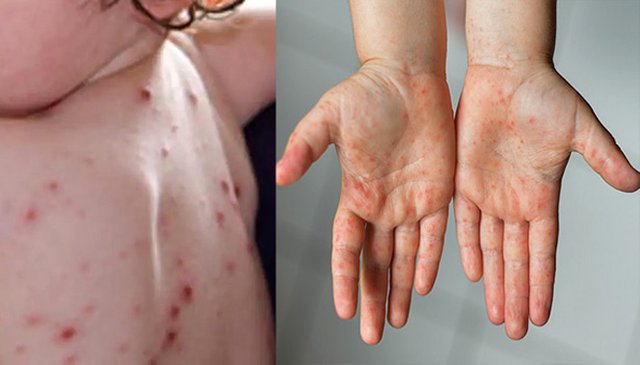Tomato Fever: What Centre’s Advisory Says about Tomato Flu Symptoms, Prevention and Precautions
Tomato Fever - Centre’s Advisory to States: As the number of Tomato Flu cases in the country rise above 100, the Central Government issued an advisory to states to help mitigate response to the disease. The Central Government’s Advisory issued to States is about Hand, Foot and Mouth Disease (HFMD), which is commonly known as Tomato Flu or Tomato Fever. The advisory from the Modi Government comes as the number of Tomato Fever cases surpassed the 100 mark in the country.

Currently, the cases are being found in Kerala, Tamil Nadu, Odisha and Haryana; but have the potential to spread further. The disease which primarily spreads among children below 10 years of age, is viral and has no specific medication as treatment. In response to the rising Tomato Fever cases, the central government’s advisory prescribed a set of preventive and precautionary measures to help mitigate the situation.
Let’s decode what Centre’s Advisory Says about Tomato Flu Symptoms and the Prevention and Precautions that should be implemented.
Tomato Flu Symptoms: The advisory lists down the common symptoms of the disease as mild fever, poor appetite, malaise, and often a sore throat during the initial first two days. From Day 3 onwards, the patient will witness a spike in fever with small red spots or blisters appearing on the body, which will change to ulcers by Day 4 or 5. The sores are usually located on the tongue, gums, inside of the cheeks, palms and soles.
Other physical symptoms of the disease are fatigue, nausea, vomiting, diarrhea, fever, dehydration, swelling of joints, body aches, and common influenza-like symptoms.
Self-limiting Viral Disease: The advisory issued by Central Government to states about the Tomato Fever cases being found in young children says that it is a self-limiting viral disease with no specific medication required. It further adds that the symptoms and signs of the disease resolve after a few days on its own.
Not Linked to COVID or Monkey Pox: With many Tomato Flu symptoms being similar to that of COVID-19 and Monkey Pox, many parents had concerns about the disease being linked with the same. However, the govt advisory has made it clear that Tomato Fever is not related to SARS-CoV-2 (Covid-19), monkeypox, dengue, and/or chikungunya.
Precautionary Techniques: The advisory issued by the Centre also notes that no specific medication is available for Tomato flue and has prescribed prevention techniques and awareness as the best defence mechanism against the disease. Like other viral diseases, any person exhibiting symptoms of Tomato Fever should be isolated to avoid the spread of infection among others. Patients are advised to remain hydrated and take proper rest for quick recovery. To help alleviate irritation from sores and rashes, a hot water sponge bath has been recommended.
Prevention Techniques: Staying true to ‘prevention is better than cure’ principle; the advisory says proper r hygiene and sanitization of the surroundings as the best preventive method to avoid contracting the Tomato Flu. Advisory also says that patients should avoid sharing toys, clothes, and food with uninfected people. Direct and immediate contact with the patient should be avoided as a preventive measure.
Supportive Therapy: In order to help manage the symptoms of Tomato Flu, supportive therapy or treatment is advised, which includes medication for fever and body ache. As of now, no specific anti-viral drugs or vaccines are available for Tomato Flu.